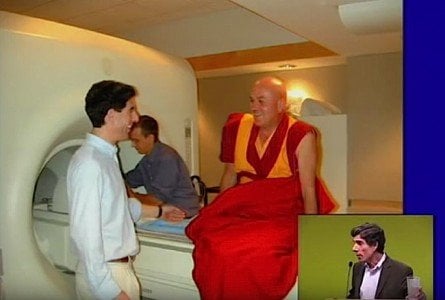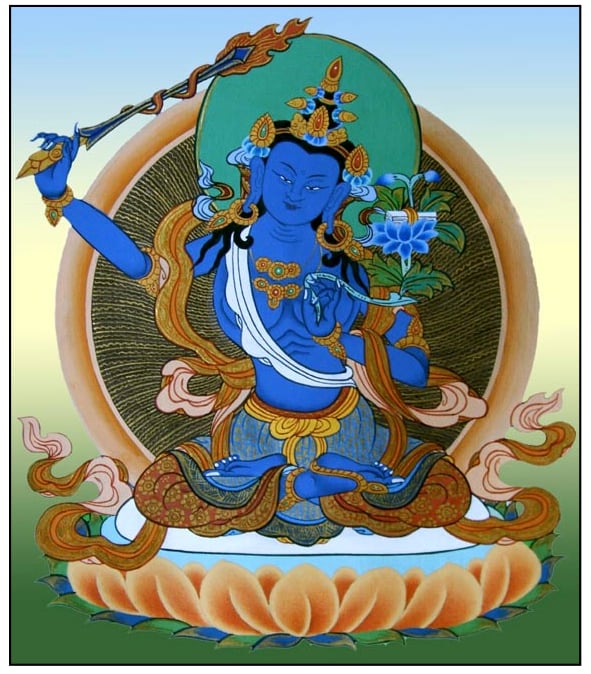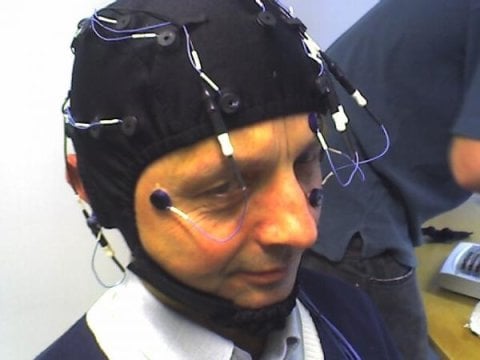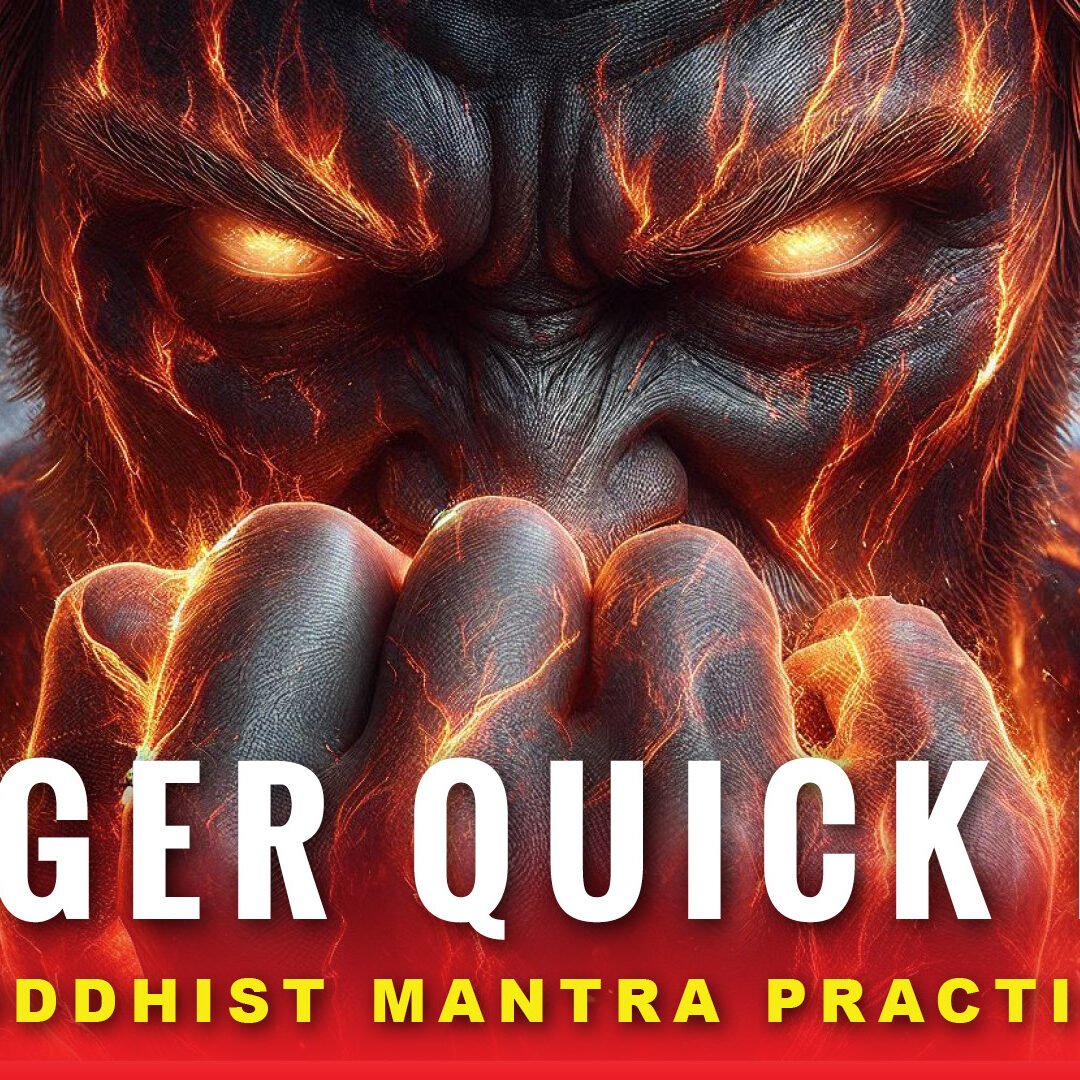Scientific Buddhist: Healing meditation, prayer and mantras? Do they work — according to research? Can we turn to mantras for help?
Do you feel silly when you turn to “mantras” for healing? Do you think meditation is healthy but not necessarily healing? Does it seem impossible to expect results from meditating on the Medicine Buddha?
To chant or not to chant? — that is the question. To Pray or not to pray? To meditate or not to meditate? Why bother? Does it work? With new viruses arising, and the current pandemic — and with the increasing growth in cancer and other deadly diseases — how much benefit can we realistically expect from a mantra, or a breath-meditation, or “Deity” visualized healing meditation? Does it even work?
Short answer, yes.
[See cited medical studies below. Normal health disclaimers apply, including the caution to always seek the advice of your health practitioners. This is an information feature — no advice is given in this feature.]

For example, in a recent study testing immune function, flu shots were given to two control groups — one group made up of volunteers who meditated daily, and the other who didn’t. By giving a flu shot, it was certain all participants would have an antibody response — but the question was how much? “Blood tests taken later showed the meditation group had higher levels of antibodies produced against the flu virus, according to the study in Psychosomatic Medicine.” [1]
Hundreds of medical and scientific studies support the idea that meditation, mantras, and even prayer can heal — especially in any area of body medicine influence by brain, metabolism or nervous system. [For numerous cited studies with links, see this detailed feature>>]
In fact, these studies go so far as to claim that meditation can “slow aging, increase brain matter, and decrease PTSD and Schizophrenia.”
[Normal disclaimer: “but, meditation is not a replacement for good medical care.” Always consult your health care provider.]
Meditation and illness

According to the Mayo Clinic: “Meditation might also be useful if you have a medical condition, especially one that may be worsened by stress… some research suggests that meditation may help people manage symptoms of conditions such as:
- Anxiety
- Asthma
- Cancer
- Chronic pain
- Depression
- Heart disease
- High blood pressure
- Irritable bowel syndrome
- Sleep problems
- Tension headaches
- Be sure to talk to your health care provider about the pros and cons of using meditation if you have any of these conditions or other health problems.” [2]

The immune system responds to stress-reduction

Cardiologist Herbert Benson, M.D. — who engaged in more than thirty years of research on the benefits of meditation on health — is unequivocal:
“The relaxation response [from meditation] helps decrease metabolism, lowers blood pressure, and improves heart rate, breathing, and brain waves,” Doctor Benson, the founder of the Mind/Body Institute at Harvard Medical School’s Beth Israel Deaconess Medical Center.
In the same way stress, bereavement, and lack of sleep can make us sick, meditation, mantra, and prayer can reverse this damage. And, going beyond this, even virulent viruses respond to meditation, stillness, repeated mantra recitation or Metta meditation.
Regardless of meditation style, your body can benefit in different ways. [For more on this, see various studies cited below.]
But what about Deity Yoga — such as visualizing healing light from Medicine Buddha or Black Manjushri. In the Vajrayana Buddhist tradition, the healing benefits are enhanced by visualization. By visualizing the healing light ‘obliterating cancer cells’ we focus our minds in specific helpful ways.
Black Manjushri for serious disease — that’s silly right?

Sounds funny, doesn’t it? (At least to a non-practitioner.) How does meditating on any visualized deity, with or without mantras, have any effect? There are countless ways such practices help, that go beyond “faith healing” as a notion. Faith is irrelevant (although helpful). Rather, visualized deity meditation works through the Buddhist concept of Buddha Nature.
You can view the “deity” as Black Manjushri (or Medicine Buddha, or White Tara) — or as your own Buddha Nature. In Mahayana Buddhist thought, they are not separate. In other words, faith in yourself is all that you need.
In addition to the benefits of mantra or repeated words (see study below) with Deity visualization, you include the focus of visualization — of targeting the disease with light or energy. Additionally, we layer in the loving mind of Buddha Nature (our own, and that of the deity we visualize.)
Turn the mind on the body, the body heals
One other meditation and healing advantage of Vajrayana deity practices is the formulaic visualization itself. Repetition is virtually the definition of meditation — repeated focus on breath, a mantra, and so on.
In Vajrayana deity practice, we repeat formulated visualizations that have been used for centuries by masters who have histories of accomplishments. If you don’t concur, there’s still the benefit of laser-focused visualizations. A traditional meditation sadhana always includes Refuge, Metta, and then a detailed visualization. In the case of Medicine Buddha, or Black Manjushri, that visualization will be precisely focused on disease and healing. By turning the mind on the body, the body heals.
For example, try out the Medicine Buddha meditation video below. You don’t need to “believe” in Medicine Buddha to engage the healing mind. Faith isn’t the main engine of healing. When Rinpoche guides you to visualize healing light — “the healing blue light, it fills your body. It is healing light, purifying you and healing light” — the mind disengages and begins the healing. You can think of the blue healing light as your own Buddha Nature, or Medicine Buddha — it doesn’t matter, and ultimately, they are the same thing.
Guided Medicine Buddha meditation:
Science supports the healing benefits
Regardless of your choice of meditation, here’s a short list of ways mantra and meditation can help with some cited studies.
1 – Effect on the brain — brain changes body

There have been countless studies involving MRI’s that show how meditation and mantra “shown an increase in activity in areas that control metabolism and heart rate. Other studies on Buddhist monks have shown that meditation produces long-lasting changes in the brain activity in areas involved in attention, working memory, learning, and conscious perception.” [1]
2. Relaxation heals: really, it does
Many of the diseases we suffer from — including chronic illnesses such as Rheumatoid Arthritis — respond to the healing environment created by “relaxation.”
In a feature on WebMD, Dr. Stan Chapman, PhD, pointed out that mantra — or repeating a word over and over, especially if “meaningful” or aspirational — or just “ignoring thoughts” creates a healing “biological response of relaxation.” Dr. Chapman is a psychologist in the Centre for Pain Medicine at Emory Healthcare in Atlanta. He added: “Meditation is not difficult to learn. ou don’t need to see a therapist 40 times to learn it. But like tennis, it’s a skill. You need to practice. In time, people develop the ability to produce these meditative, very relaxed states very quickly. When they meditate several times during the day, they become more relaxed during the entire day.”
3. Mantra, Metta and Meditation shown to decrease illnesses

In many studies, both mantra and meditation showed remarkable boosts to the immune system — our many weapons in fighting any disease.
In one study, peer-published in The Journal of Biobehavioral Medicine, the study specifically found: “that a short program in mindfulness meditation produces demonstrable effects on brain and immune function. These findings suggest that meditation may change brain and immune function in positive ways and underscore the need for additional research.”
In an important paper published in Psychosomtic Medicine, a report concluded “We report for the first time significant increases in left-sided anterior activation, a pattern previously associated with positive affect, in the meditators compared with non meditators.
In studies, Metta (loving-kindness) meditation was shown to decrease illnesses. [More, including citation at this link>>]
All Vajrayana deity practices — especially Medicine Buddha or Black Manjushri — are Metta practices. They start and end with Metta.
4. Metta Meditation is shown to “slow aging” and reduce illness

From research: The LKM [Loving Kindness Meditation] practitioners had longer RTL than controls at the trend level (p=.083); among women, the LKM practitioners had significantly longer RTL than controls, (p=.007), which remained significant even after controlling for BMI and past depression. Although limited by small sample size, these results offer the intriguing possibility that LKM practice, especially in women, might alter RTL, a biomarker associated with longevity.” Details of research here>>
NOTES
[1] “Meditation Balances the Body’s Systems (WebMD)”
[2] Mayo Clinic: Meditation: A simple, fast way to reduce stress
2 thoughts on “Scientific Buddhist: Healing meditation, prayer and mantras? Do they work — according to research? Can we turn to mantras for help?”
Leave a Comment
More articles by this author

NEW MUSIC ALBUM! Four Heavenly Kings: Mantras Chanted in Sanskrit for Good Fortune, Protection, Harmony and Wisdom

4 Guardians of the World and Dharma: the Watchers of the World: the Four Heavenly Kings in Buddhism, Their Mantras and Practice
Search
Latest Features
Please support the "Spread the Dharma" mission as one of our heroic Dharma Supporting Members, or with a one-time donation.
Please Help Support the “Spread the Dharma” Mission!

Be a part of the noble mission as a supporting member or a patron, or a volunteer contributor of content.
The power of Dharma to help sentient beings, in part, lies in ensuring access to Buddha’s precious Dharma — the mission of Buddha Weekly. We can’t do it without you!
A non-profit association since 2007, Buddha Weekly published many feature articles, videos, and, podcasts. Please consider supporting the mission to preserve and “Spread the Dharma." Your support as either a patron or a supporting member helps defray the high costs of producing quality Dharma content. Thank you! Learn more here, or become one of our super karma heroes on Patreon.
Lee Kane
Author | Buddha Weekly
Lee Kane is the editor of Buddha Weekly, since 2007. His main focuses as a writer are mindfulness techniques, meditation, Dharma and Sutra commentaries, Buddhist practices, international perspectives and traditions, Vajrayana, Mahayana, Zen. He also covers various events.
Lee also contributes as a writer to various other online magazines and blogs.

















Hello Lee,
I enjoyed reading your informative article on healing meditation.
It is good to know meditation can help us heal, and obtain inner peace during this Coronavirus pandemic.
Stay healthy everyone.
Thanks for the valuable information. This is a great motivation to practice Medicine Buddha Meditation and Vajrayana deity practices. It is wonderful that Buddhists are so open to scientific research.